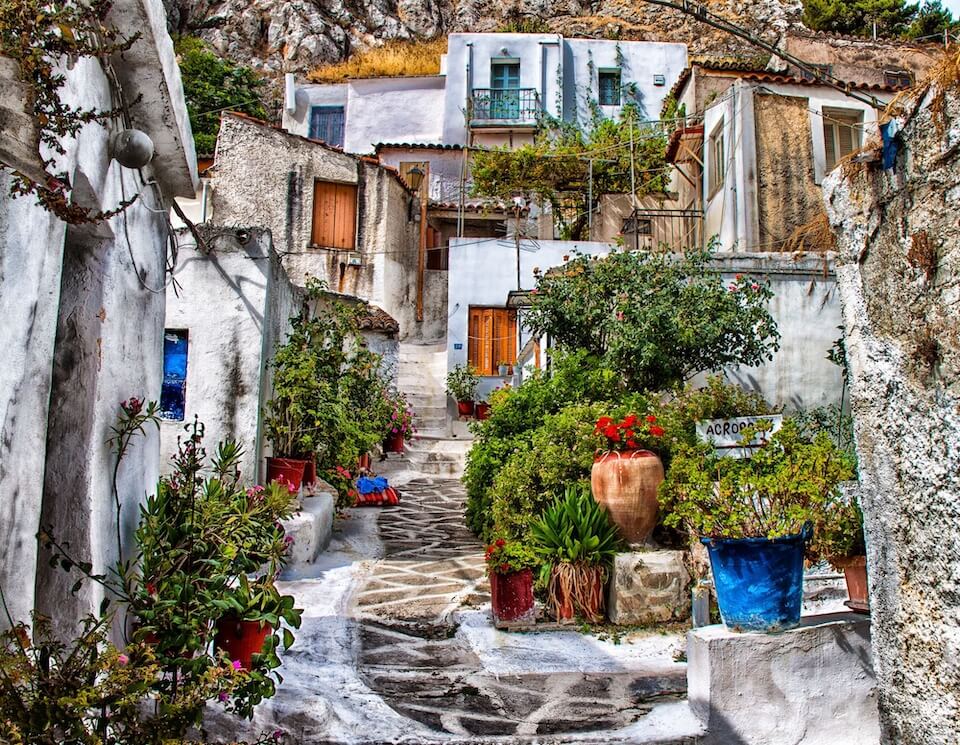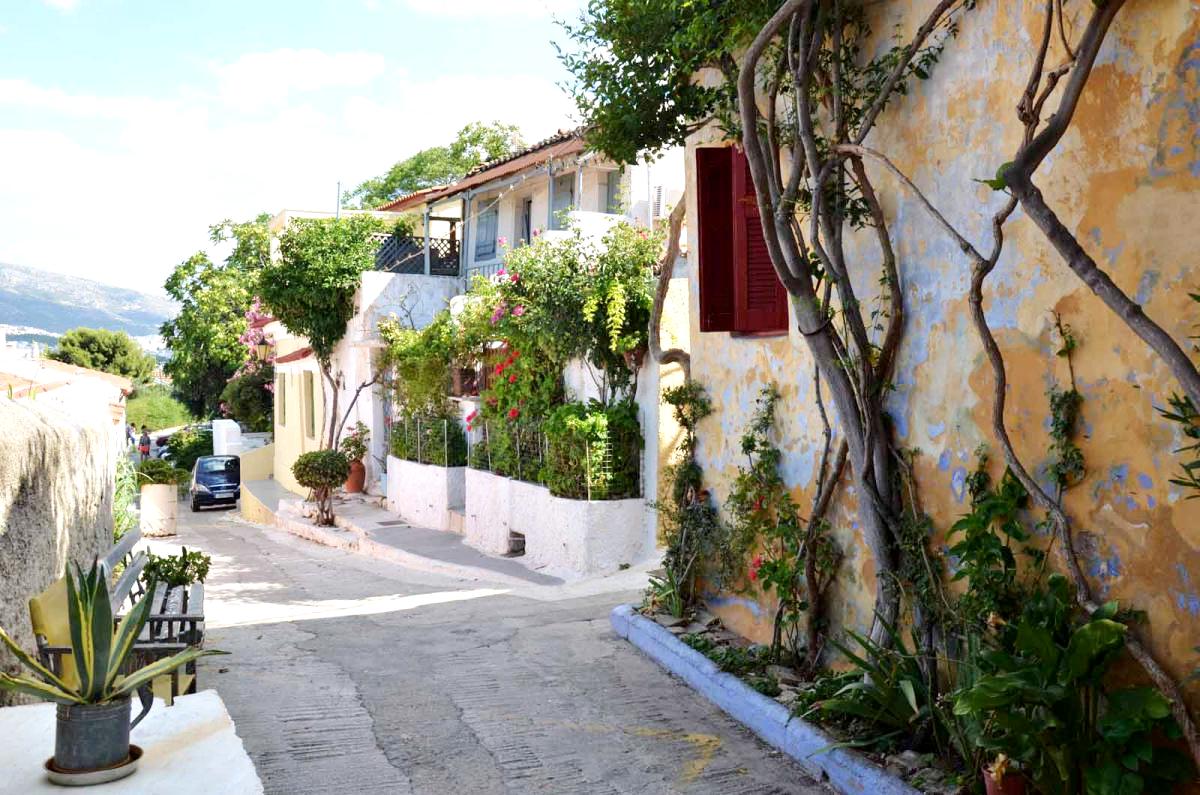Cycladic islet in Athens: Anafiotika


With the kind word “Anafiotika”, Greeks call a tiny area on the northern slope of Acropolis, part of the oldest district of Athens—Plaka; and if you dreamed of getting to the islands, but something did not work out, you should come here.
White and blue houses, narrow streets with waterfalls of bougainvillea, smiling people and peaceful atmosphere around. An unhurried rhythm, unusual for Athens, seems to take you away to the Cycladic islet of Anafi[1], thanks to whose natives the “little Anafi”, this Anafiotika, appeared in the capital.

In 1833, on the British frigate named Madagascar, the first Greek king Otto of Bavaria, 17-year-old son of Louis I, arrived in Nafplio, the then capital of Greece. As early as the next year, King Otto decided to make Athens the main city of the country, however, it was destroyed and depopulated: with only seven thousand inhabitants. Very conveniently, along with Otto, the architect von Klenze arrived in Greece: he dreamed of restoring Athens.
Of course, first work was the palace for King and his wife Amalia, but the project was carried out by the architect von Gärtner, Klenze’s student. The workers were discharged from the island of Anafi: they were famous construction craftsmen; and it paid off, because they quickly got down to business and not only on the construction of the palace. One dark night the carpenter Yorgos Damigos and the bricklayer Mikhalis Sigalas slowly brought building materials to the slope of the Acropolis, not far from the main construction site, and, as they say, each of them built a house overnight for themselves. Until the authorities noticed the unauthorized construction their colleagues from the “palace constructors” have done the same too. In this way Anafiotika grew up with its white and blue houses, stairs and cats walking everywhere in the very heart of Athens.

True, the houses are tiny, ranging from 8 to 36 sq.m. In 1970s many of them were demolished but most remained: some were handed over to the Archeological Society, and in some still live about 60 people! With love they support the flavor of their native island: everything is whitewashed, painted and well-groomed. Of course, there are also temples: they restored two local churches of the 17th century—the ones of Agios Simeon ana Agios Georgios.
They say that after a walk along the streets of Anafiotika, it is good to sit down in the evening in a local coffee shop. The aroma of pastries, a music, laughter of guests and a view of the Acropolis illuminated by night lights. What could be better than this end of a summer day in Athens?

By 1842 they finished the palace for King Otto. True, he did not have to live there for very long time. After the revolution of 1862, the king was dethroned and expelled; and his residence was transferred in 1934 to the Greek Parliament, where it is still located on Syntagma Square.
[1] Anafi island located 12 nautical miles east of Santorini is part of the Cyclades archipelago. The island covers an area of 38 sq.km. Its permanent population is about 300 people. A cozy place for a calm, secluded relaxation.